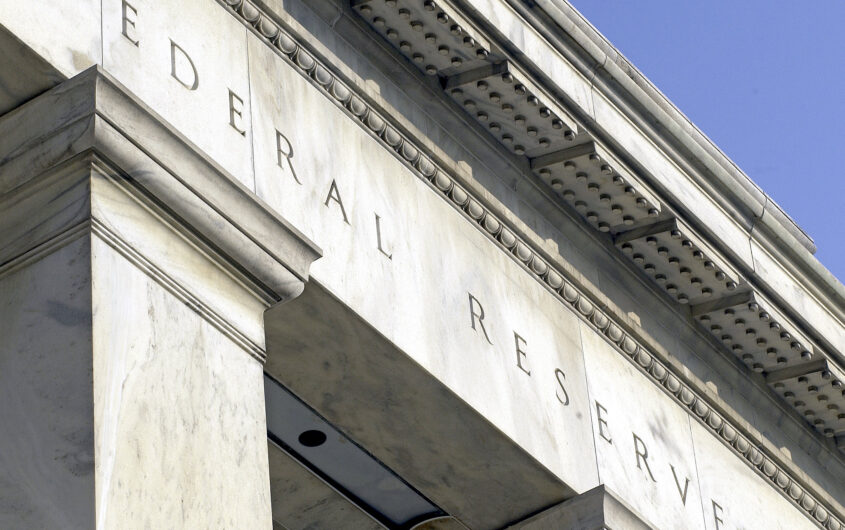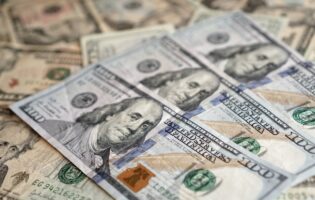
Federal Reserve via Flickr
Central Bank Independence at Risk—For Various Reasons

Jörn Quitzau
Bergos AG
Joern Quitzau is a Geoeconomics Non-Resident Senior Fellow at AGI. He is Chief Economist at Bergos, a private bank based in Switzerland. He specializes in economic trend research and economic policy. Joern Quitzau hosts two Economics podcasts.
Prior to his position at Bergos, Joern Quitzau worked for Berenberg in Hamburg (2007-2024) and Deutsche Bank Research in Frankfurt (2000-2006) with a special focus on tax and fiscal policy.
Dr. Quitzau (PhD, University of Hamburg) was a Visiting Fellow at AGI in April 2014 and September 2022 and an American-German Situation Room Fellow in April 2018.
The news surrounding the independence of the U.S. Federal Reserve remains explosive. U.S. President Donald Trump is keeping up the pressure on the Fed, including its chairman, Jerome Powell. Trump is demanding that the Fed cut interest rates to stimulate the economy.
In recent weeks, the situation has been further exacerbated by a number of personnel changes. First, Fed Governor Adriana Kugler ended her term, which would have run until January 2026, prematurely. President Trump then sent his chief economic advisor Stephen Miran to the Federal Reserve as her replacement (Miran still has to be confirmed by the Senate). Later, Trump dismissed Fed Governor Lisa Cook. It is not clear whether this is legally possible. In any case, Lisa Cook is fighting her dismissal.
Against this backdrop, the question arises as to how a formally independent central bank can, in fact, become politically influenced or dependent. There are at least three ways: 1. political pressure, 2. personnel selection, and 3. fiscal dominance.
Political pressure
Trump’s repeated public insults toward the Fed and its chairman may leave their mark on central bankers and influence their decision-making behavior in the longer term. So far, Jerome Powell has remained steadfast and has not yielded to pressure to cut interest rates. The Fed last lowered its key interest rate in December 2024, before Donald Trump took office. Since then, key interest rates have remained steady at 4.25-4.50 percent.
Ultimately, however, central bankers are human beings, not robots. Constant pressure and a climate of fear can leave their mark. At its next meeting on September 16 and 17, the Fed is likely to decide to cut interest rates despite inflation remaining too high—the markets currently expect this to happen with a probability of around 90 percent. Jerome Powell’s speech at the central bank conference in Jackson Hole, in which he signaled an imminent easing of monetary policy, is likely to have been a turning point.
Experience shows that an independent central bank has a positive effect on price stability and economic development.
It remains speculative whether political pressure is now having an effect or whether the Fed intends to ease monetary policy in response to recent economic data. Since economic data has not changed so significantly since the last Fed meeting at the end of July that an interest rate cut is virtually inevitable, there is reason to suspect that the attacks on the Fed are now having an effect after all.
The risk of political pressure is significantly greater in the United States than in the eurozone. Since there is no strong central government in Europe, political pressure would come from the euro member states, if at all. Their interests are very heterogeneous, so a situation such as that brought about by President Trump in the United States is unlikely to arise in the euro area.
Personnel selection
The top positions in central banks can be filled according to the candidates’ monetary policy orientation (“hawks” or “doves”). In this way, the central bank’s monetary policy course can be steered at least moderately in the desired direction in the long term. Such personnel decisions are rarely completely apolitical, even outside the United States. In the past, for example, there was interest in ensuring that no German became president of the European Central Bank. Germany is considered to be very stability-oriented in terms of monetary policy. Some member states therefore feared that monetary policy would be too tight under a German ECB president. Although there have been several German candidates for the post, none have been successful in the end.
In the United States, there is essentially no significant risk that the Federal Reserve’s stance could be changed in the short term by personnel appointments made by the current U.S. president. The members of the Board of Governors have a long term of office, lasting fourteen years. For President Trump, the personnel selection process would probably take too long, as the terms of office of most of the current Fed governors are longer than Donald Trump’s term as U.S. president. If Trump were to replace Fed Chairman Jerome Powell—which he has threatened to do on several occasions—only one of the Federal Open Market Committee’s (FOMC) twelve votes would be affected. If this were to happen, under normal circumstances one would expect all other FOMC members to support the Fed’s independence.
However, this is no longer certain. Following Adriana Kugler’s voluntary resignation a little over a month ago, Stephen Miran, a Trump confidant, is likely to join the Board of Governors. Miran has his own ideas about restructuring the Fed. He documented these in a research paper (Reform the Federal Reserve’s Governance to Deliver Better Monetary Outcomes) published in 2024, before he became an advisor to Trump. Following Lisa Cook’s dismissal, another position would need to be filled, provided Trump’s decision is upheld in court. In any case, the past few weeks have increased the likelihood that the Federal Reserve’s personnel structure could be changed in line with the U.S. president’s wishes.
Fiscal dominance
High levels of government debt pose a major threat to the independence and ability of a central bank to act. This can result in what is known as fiscal dominance: if debt rises so sharply that governments can no longer finance themselves on the capital market at reasonable terms without the help of their own central bank, the central bank may be forced to take monetary policy measures that it would not take with respect to its original monetary policy mandate. This requires neither political pressure nor political directives. The central bank acts “voluntarily” in this way and is thus forced to risk higher inflation rates in order to avert even greater damage, such as debt or financial crises.
The United States, the eurozone, and Japan have all experienced episodes of fiscal dominance in recent years. The best protection against such fiscal dominance is credible fiscal rules (e.g., debt brakes) that effectively limit debt-financed government spending. The comparatively low levels of government debt in countries with debt brakes (Switzerland, Germany) are no coincidence.
Outlook
It is beneficial to transfer responsibility for monetary policy to a politically independent central bank, whose primary concern is to ensure monetary stability. Experience shows that an independent central bank has a positive effect on price stability and economic development. If, on the other hand, responsibility for money and currency were placed in the hands of politicians, or at least within their sphere of influence, there would be a high risk of a loose, inflationary monetary policy that would also damage the external value of the currency. The attacks on the independence of the Federal Reserve are therefore playing with fire.








